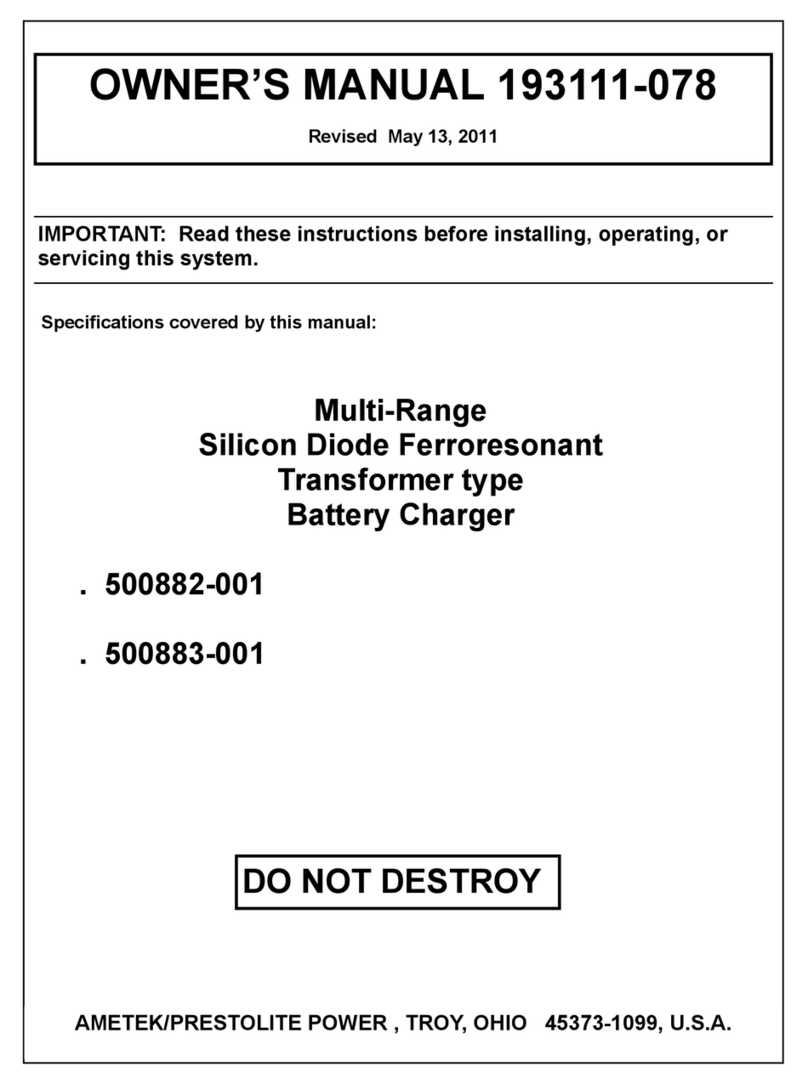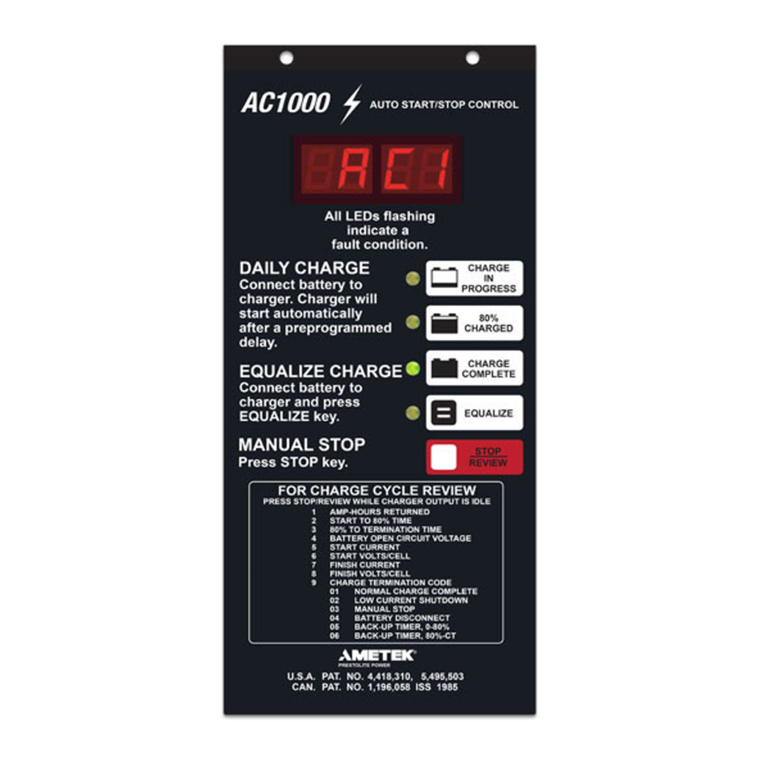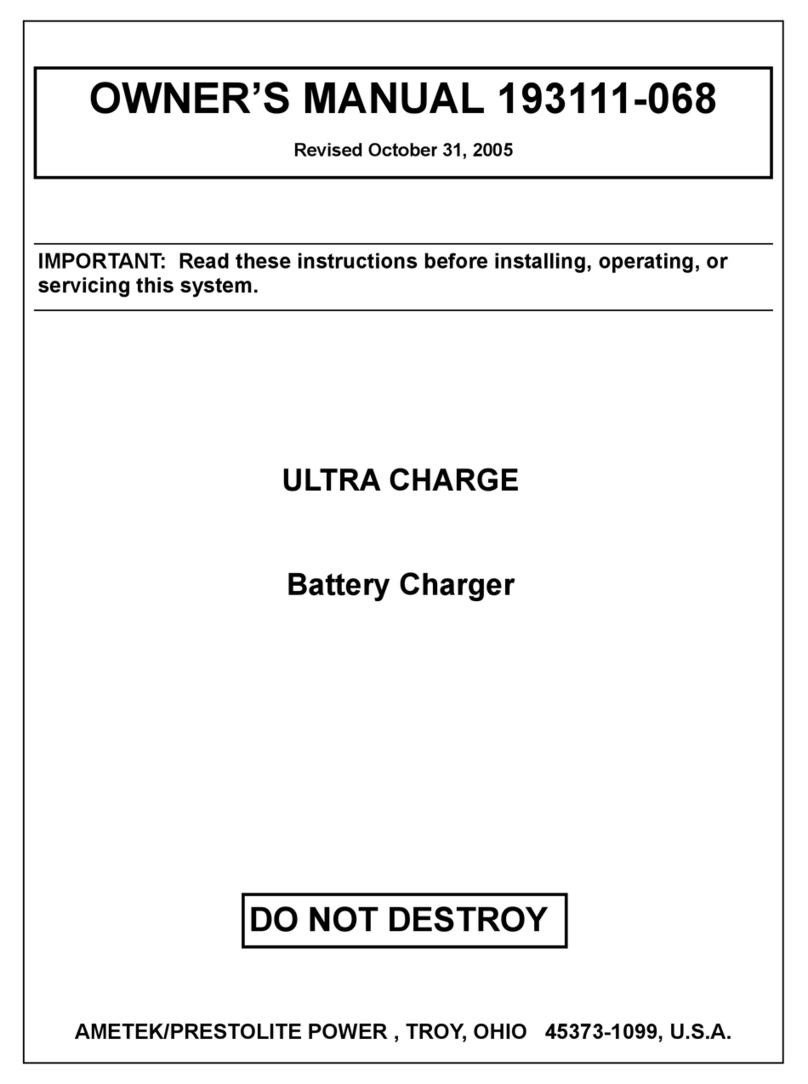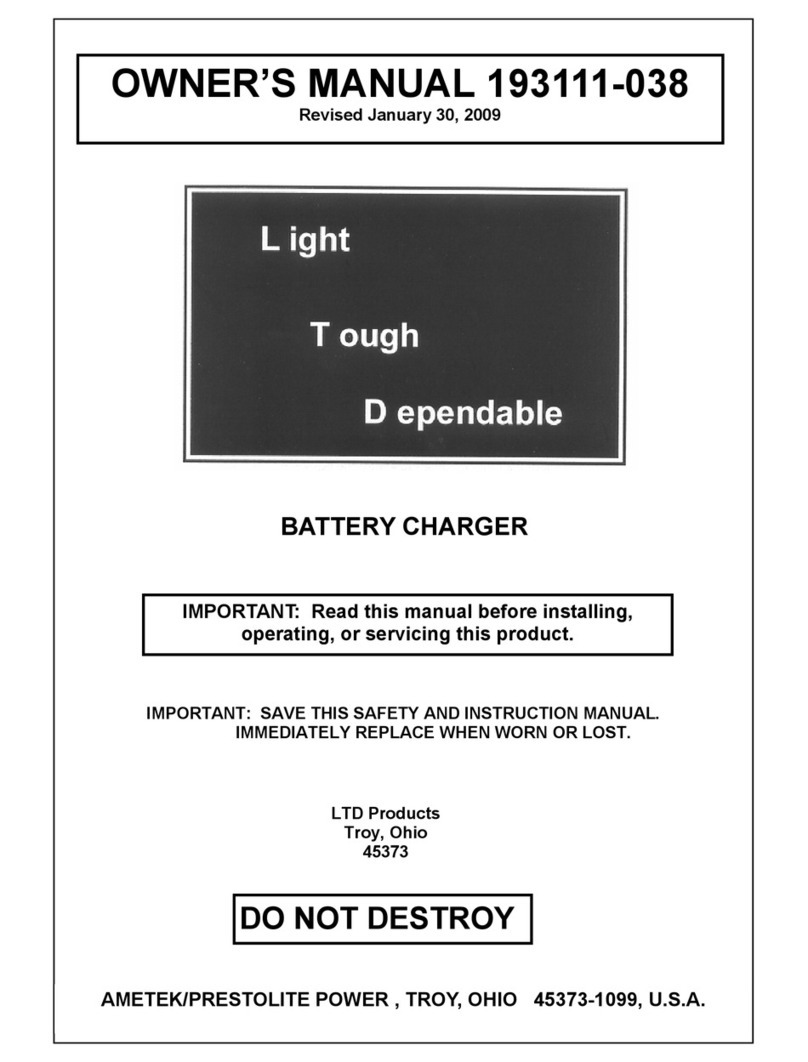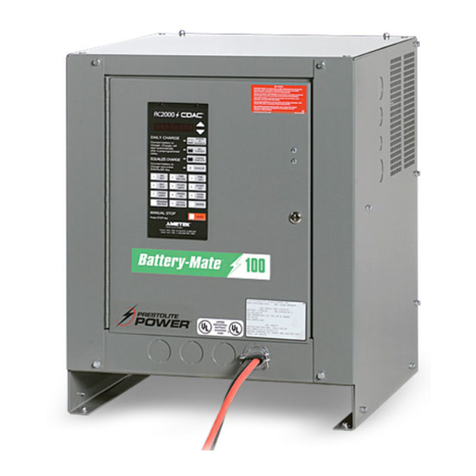Location
For best operating characteristics and longest unit life,
take care in selecting an installation site. Avoid
locations exposed to high humidity, dust, high ambient
temperature, or corrosive fumes. Moisture can
condense on electrical components, causing corrosion
or shorting of circuits (especially when dirt is also
present).
Adequate air circulation is needed at all times in order
to assure proper operation. Provide a minimum of 12
inches of free air space at the top and front of the unit.
Make sure that ventilation openings are not obstructed.
Always remove the charger shipping skid from the unit
before installation. The charger must be installed over
a noncombustible surface such as concrete or metal.
Keep the charging area clear of all combustible materi-
al such as wood, paper, and cloth. When moving the
charger after the packing skid and box have been
removed, make sure that lifting forks do not damage
the charger panels or cables.
WARNING: SPARKS OR MOLTEN METAL
falling through open bottom can cause fire or
explosion.
•Install over noncombustible material such as
concrete or metal.
•Keep charging area clear of combustible
material.
Environmental Characteristics
Operating Characteristics 0°C to 40°C
(32°F to 104°F)
Operating Altitude To 2000 Meters
(6562 Feet)
Operating Humidity 80% up to 31°c,
decreasing to 50% at
40°C, non-condensing
80% up to 88°F
decreasing to 50% at
104°F, non-condensing
Grounding
The frame of the power source must be grounded for
personnel safety. Where grounding is mandatory un-
der state or local codes, it is the responsibility of the
user to comply with all applicable rules and regulations.
Where no state or local codes exist, it is recommended
that the National Electrical Code be followed.
In addition to the usual function of protecting personnel
against the hazard of electrical shock due to fault in the
equipment, grounding serves to discharge the static
electrical charges which tend to build up on the
surfaces of equipment. These static charges can
cause painful shock to personnel, and can lead to the
erroneous conclusion that an electrical fault exists in
the equipment.
If a charger is to be connected to the AC power supply
with a flexible jacketed cable, one having a separate
grounding conductor should be used. When included
in cable assembly, grounding conductor will be green,
green with a yellow stripe, or bare. When connecting
input power to charger (as instructed in Line Connec-
tion to Battery Charger section of this manual), connect
grounding conductor to equipment grounding terminal,
taking care to make a good electrical connection. Con-
nect other end of grounding conductor to the system
ground.
If, for any reason, an input cable which does not in-
clude a grounding conductor is used, the equipment
must be grounded with separate conductor. Minimum
size and color coding requirements must be in accord-
ance with any applicable state or local code, or the Na-
tional Electrical Code.
If metallic armored cable or conduit is used, the metal
sheathing or conduit must be effectively grounded as
required by state or local code, or the National Electri-
cal Code.
If a system ground is not available, the charger frame
must be connected to a driven ground rod (at least 8 ft
[2438 mm] long), or to a water pipe that enters the
ground not more than 10 ft (3048 mm) from the
charger. A grounding conductor must be connected to
the rod or pipe in a manner that will assure a
permanent and effective ground. The conductor must
be sized in accordance with any applicable state or
local code, or by the National Electrical Code. If in
doubt, use the same size conductor as is used for the
conductors supplying power to the charger.
November 23, 2020 4-1
193111-200
INSTALLATION
INSTALLATION
WARNING: ELECTRIC SHOCK
HAZARD- Under no circumstance
should you use a grounding
conductor with a current carrying
capacity less than the ampere
rating shown in Table 4-1.
